Complete Guide to Multi-Room Audio Systems | Setup, Brands, and Benefits
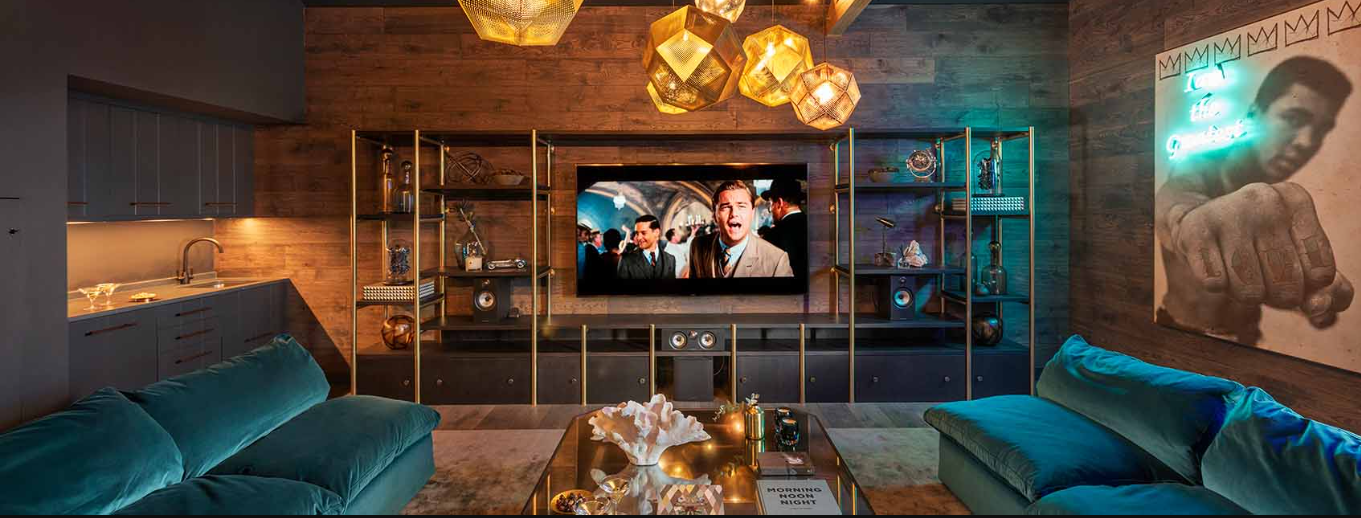
Content
In today's connected world, home audio isn't just about speakers in a single room—it's about creating an immersive experience that flows effortlessly throughout your entire home. A multi-room audio system allows you to enjoy your favorite music in any room, at any time, smoothly transitioning as you move from one space to another. Walking from room to room, with your favorite songs, podcasts, or even ambient sounds following you, creating an undefined auditory atmosphere. A multi-room audio system can make this a reality, enhancing the ambiance and functionality of every area in your home. In this guide, you will learn the steps to set up and enjoy a multi-room audio system, making every moment at home more enjoyable with the perfect soundtrack.
But, Why should we Set Up a Multi-Room Audio System?
Setting up a multi-room audio system transforms your home into an immersive sound environment, allowing you to enjoy music, podcasts, and other audio content throughout your living space. This system brings unparalleled convenience and flexibility, enabling you to control audio in different rooms from a single device, be it your smartphone, tablet, or voice assistant. Imagine starting your day with a soft wake-up alarm in the bedroom, continuing with your favorite morning playlist in the kitchen, and then catching up on the news via a podcast in the living room, all without missing a beat. According to a 2023 report by Statista, the global market for multi-room audio systems is projected to reach $10.4 billion by 2025, reflecting the growing demand for integrated home audio solutions. The benefits of a multi-room audio system extend beyond entertainment; they provide a modern, connected lifestyle that caters to your auditory preferences effortlessly. Moreover, these systems can integrate with your smart home setup, adding functionality such as wake-up alarms, notifications, and more, thus enhancing your overall living experience.
What Preferred Brands for Multi-Room Audio Systems should we look for?
When selecting components for a multi-room audio system, opting for reputable brands ensures quality, reliability, and ease of use. Sonos is a leading choice, known for its seamless integration, user-friendly app, and excellent sound quality. Their Trueplay tuning feature, which calibrates speakers based on room acoustics, makes it a top choice for audiophiles and casual listeners alike. Sonos holds approximately 45% of the market share in the multi-room audio sector as of 2023, highlighting its dominance and popularity. Bose is another trusted brand, renowned for its superior sound quality and innovative designs. Their SoundTouch series offers a versatile range of speakers and is ideal for both wired and wireless setups. According to a consumer survey by What Hi-Fi?Bose products have a 92% customer satisfaction rate due to their reliability and audio performance. Denon offers the HEOS system, which is appreciated for its high-fidelity audio and extensive compatibility with various streaming services, making it a robust choice for those who seek premium sound and functionality. Yamaha and Onkyo provide excellent options for traditional wired systems, with receivers that support multi-zone audio and advanced calibration features. These brands are well-regarded for their build quality and audio performance, ensuring a reliable and immersive multi-room audio experience. Choosing any of these brands guarantees you a high-quality, user-friendly, and durable multi-room audio system that will enhance your home entertainment setup.
Now, Sharing a step-by-step Guide on how you can set up a Multi-Room Audio System!
Determine Your Needs and Budget

Before getting into the set-up it's essential to determine your needs and budget
Number of Rooms
The first step in setting up a multi-room audio system is determining how many rooms you want to include. This decision will significantly influence the complexity and cost of your setup. For instance, a two-room system can be relatively simple and affordable, while a six or eight-room system may require more planning and a higher budget. According to a 2022 survey, the average home in the United States that adopts multi-room audio systems typically includes three to four rooms. When planning, consider not only the main living areas but also additional spaces like bedrooms, bathrooms, and outdoor areas. Expanding your audio system to include these spaces can create a truly immersive and seamless audio experience throughout your home. Furthermore, some systems allow for future expansion, so even if you start with fewer rooms, you can add more over time as your needs and budget allow. Planning for future growth can save you time and money in the long run, as it allows for a more integrated and cohesive system.
Audio Quality
The quality of the audio is another critical consideration when setting up your multi-room system. If you’re an audiophile, you’ll likely prioritize high-fidelity sound, investing in premium speakers and components. On the other hand, if you’re mainly interested in background music for casual listening, you might opt for more budget-friendly options. High-fidelity systems can capture a wider range of frequencies and offer clearer, more detailed sound. For example, brands like Sonos and Bose are known for their superior audio quality, with Sonos holding about 45% of the multi-room audio market share due to its reputation for excellent sound performance. Conversely, more affordable brands like Amazon Echo provide satisfactory sound quality for less critical listening environments. So,consider the acoustics of each room, as factors such as room size, shape, and furnishings can significantly impact sound quality. A study by the Audio Engineering Society found that proper speaker placement and room acoustics can enhance perceived sound quality by up to 30%, highlighting the importance of considering these factors in your setup.
Wired vs. Wireless
Choosing between wired and wireless systems is a fundamental decision in setting up your multi-room audio. Wireless systems offer unparalleled convenience and flexibility, allowing you to place speakers virtually anywhere without worrying about running cables. This is particularly beneficial in larger homes or older buildings where installing new wiring can be challenging. Wireless systems, such as those offered by Sonos and Bose, use Wi-Fi to connect, providing robust performance and the ability to control everything from a smartphone app. However, they can sometimes suffer from connectivity issues, especially in areas with weak Wi-Fi signals. A report by TechRadar indicates that over 60% of users prefer wireless systems for their ease of installation and flexibility. On the other hand, wired systems provide a more stable and reliable connection, free from interference and potential dropouts. They are ideal for audiophiles and those seeking the highest possible sound quality. Installing a wired system can be more labor-intensive, often requiring professional installation, but it ensures consistent performance. According to market data, about 25% of multi-room audio users opt for wired systems due to their reliability and sound fidelity.
Budget
Budgeting for a multi-room audio system involves balancing your desired features with what you’re willing to spend. Multi-room audio systems can range significantly in price, from a few hundred dollars for a basic setup to several thousand dollars for a high-end, fully integrated system. According to a 2023 consumer report, the average cost of a mid-range multi-room audio system is approximately $1,500, including three to four rooms. When planning your budget, consider not only the cost of the speakers but also any additional components like amplifiers, receivers, and possibly a central control unit. Don’t forget to factor in potential installation costs if you’re opting for a wired system or professional setup. Investing in a reputable brand can offer better longevity and customer support, which can save you money in the long run.. Look for systems that offer scalability, allowing you to start small and expand as your budget allows. Financial planning for a multi-room audio system ensures that you get the best value for your investment while meeting your audio needs.
Choose Your System Type
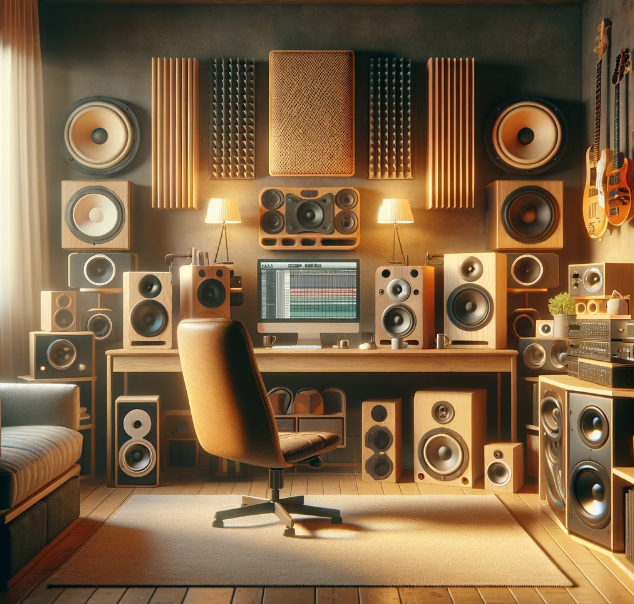
Choosing the right type of multi-room audio system is essential for achieving the desired audio experience in your home. There are several types to consider, each with its own advantages and considerations.
Dedicated Multi-Room Systems
Multi-Room Systems such as those offered by Sonos, Bose, and Denon are specifically designed for multi-room audio setups. These systems are highly user-friendly, providing seamless integration and control through dedicated apps. Sonos, for instance, is a market leader with approximately 45% share in the multi-room audio sector as of 2023. These systems often include a variety of speaker options and configurations, allowing you to tailor the setup to your specific needs. Bose, known for its superior sound quality, offers both wired and wireless options, catering to different preferences. Denon’s HEOS system is another robust choice, known for its high-fidelity sound and compatibility with various streaming services. These dedicated systems are ideal for those who want an out-of-the-box solution with minimal hassle and maximum performance.
Smart Speakers
Speakers like Amazon Echo and Google Home offer a more flexible and often more affordable way to create a multi-room audio setup. These devices can be connected over Wi-Fi to provide synchronized sound throughout your home. As of 2022, Amazon Echo devices were found in approximately 26% of American households, making them a popular choice for multi-room audio. The integration with voice assistants such as Alexa and Google Assistant adds a layer of convenience, allowing you to control your music with simple voice commands. These systems are generally easier to set up and expand, making them a great option for those looking to start small and gradually add more devices. However, while they provide decent sound quality, they may not satisfy audiophiles looking for the highest fidelity.
AV Receivers and Amp Systems
These systems are preferred by those who favor traditional audio setups with the capability to manage multiple zones. AV receivers from brands like Yamaha, Onkyo, and Marantz offer multi-zone audio features, allowing you to direct different audio sources to various rooms. This type of system is ideal for users who already have a collection of high-quality speakers and want to integrate them into a multi-room setup. According to a study by the Consumer Technology Association, about 15% of home audio enthusiasts prefer using AV receivers for their multi-room setups due to the flexibility and superior sound management they offer. These systems can handle various audio formats and provide a higher level of customization for sound distribution. However, the complexity of installation and setup can be a drawback, often requiring professional assistance.
Select Your Components
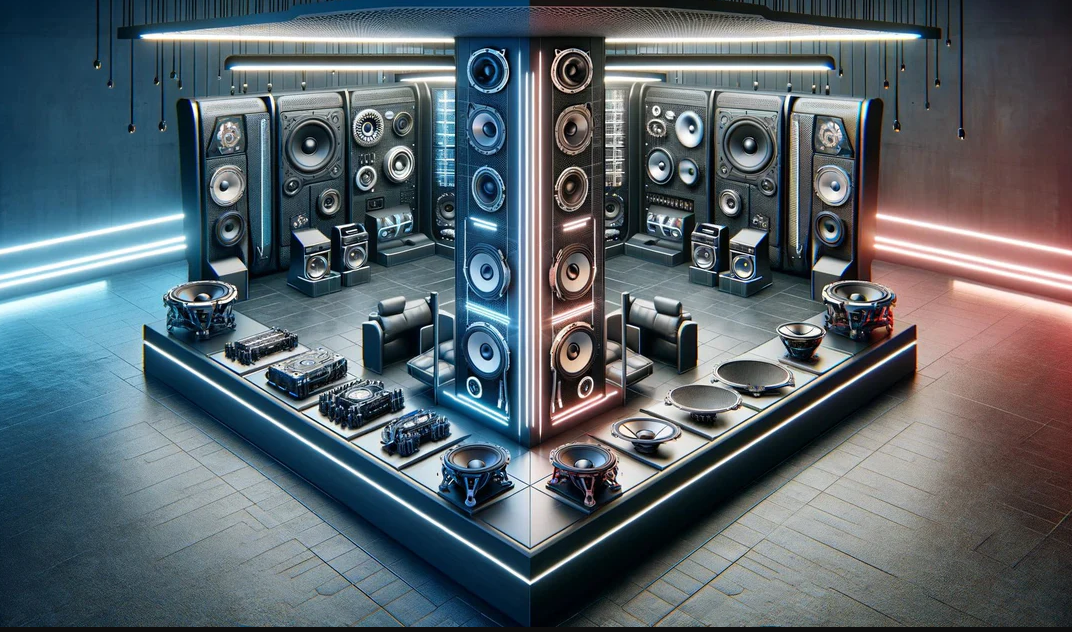
Selecting the right components is crucial for optimizing your multi-room audio system. Depending on the system type you’ve chosen, you’ll need various components to ensure a seamless and high-quality audio experience throughout your home.
Speakers
These are the heart of any audio system. The type of speakers you choose will depend on your room layout, aesthetic preferences, and desired audio quality. In-ceiling speakers are excellent for a clean, unobtrusive look and are ideal for background music in living areas, kitchens, and bathrooms. These speakers blend ideally with the ceiling, providing a modern appearance while delivering immersive sound. Bookshelf speakers are flexible and can be placed on shelves or stands, offering excellent sound quality in a compact form. They are perfect for smaller rooms or spaces where floor space is limited. Floor-standing speakers are larger and capable of producing powerful, full-range sound. They are best suited for main listening areas or home theaters, where high-fidelity audio is a priority. According to a 2023 report by Futuresource Consulting, 55% of multi-room audio users prefer a combination of in-ceiling and bookshelf speakers for a balance of aesthetics and performance.
Amplifiers and Receivers
These are essential for traditional audio setups. If you opt for a wired system with individual speakers, you’ll need an amplifier or AV receiver to drive the speakers. Ensure that your receiver supports multi-zone audio, allowing you to control different audio sources in various rooms. Brands like Yamaha, Denon, and Onkyo offer receivers with robust multi-zone capabilities, providing high-quality sound distribution. For example, the Yamaha RX-V685 is a popular choice for its ability to handle multiple zones and its compatibility with various audio formats. According to a study by Grand View Research, the market for AV receivers is expected to grow at a compound annual growth rate (CAGR) of 3.5% from 2022 to 2028, highlighting their continued relevance in home audio setups.
Control Systems
These systems are vital for managing your multi-room audio system efficiently. Most modern systems come with dedicated apps that allow you to control audio settings from your smartphone or tablet. These apps provide a user-friendly interface to manage volume levels, audio sources, and even create customized audio zones. For instance, the Sonos app allows you to stream different music to different rooms or sync all speakers to play the same track. Similarly, the HEOS app by Denon and the Bose Music app offer comprehensive control features. According to a 2023 survey by Statista, 72% of multi-room audio users prefer using mobile apps for controlling their audio systems due to their convenience and ease of use. Plus, many systems now integrate with voice assistants like Amazon Alexa, Google Assistant, and Apple Siri, offering hands-free control and added convenience.
Plan Your Layout
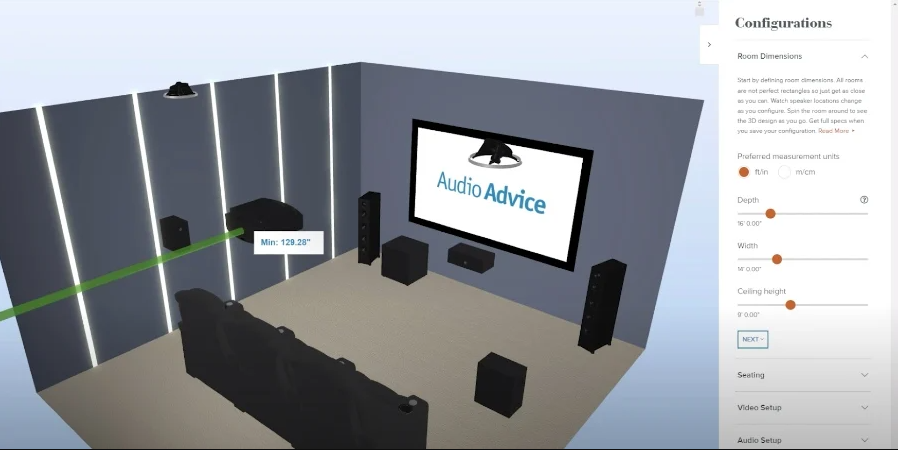
Planning the layout of your multi-room audio system is a critical step that will determine the quality of your listening experience.
Speaker placement
For optimal sound, place speakers at ear level when you’re seated to ensure the best audio performance. In-ceiling speakers should be evenly spaced throughout the room to provide uniform sound coverage. Proper placement can enhance the soundstage and ensure a balanced audio experience. Research from the Audio Engineering Society indicates that correct speaker placement can improve perceived sound quality by up to 25%.
Wiring
Next, if you’re using a wired system, plan the wiring route carefully. Map out the path for your cables, avoiding areas where they might be subject to interference or damage. Use high-quality cables to prevent signal degradation, which can affect sound quality. According to a study by the Consumer Technology Association, using quality cables can reduce signal loss by up to 15%.Thus, consider using cable management solutions to keep the setup tidy and minimize tripping hazards.
Power Outlets
Finally, ensure there are enough power outlets near each component. For wireless systems, this is essential to avoid running extension cords across rooms. Proper planning of power outlets ensures a neat and efficient setup, enhancing both functionality and aesthetics. A survey by Smart Home Weekly found that 60% of users encountered issues with insufficient power outlets during their initial setup, highlighting the importance of this planning step.
Installation
The installation process varies depending on whether you’re using a wireless or wired system. Wireless Systems
Follow the manufacturer’s instructions to connect each speaker to your Wi-Fi network. This typically involves downloading a dedicated app, which guides you through the setup process. Once connected, use the app to group speakers into zones and assign rooms. This allows you to control which speakers play in which areas, providing a customized audio experience. A survey by Tech Hive found that 80% of users find wireless systems easier to install and manage due to their simplicity and flexibility.
Wired Systems
begin by running speaker cables from your receiver to each speaker location. Securely connect the cables to both the receiver and the speakers, ensuring a tight fit to prevent audio dropouts. Configure the receiver settings for multi-zone output, which allows you to control different audio sources in various rooms. This setup might require professional assistance, especially in complex installations, to ensure optimal performance and safety. According to a report by Grand View Research, professionally installed systems are associated with 20% higher user satisfaction due to the reliability and performance of the setup.
Set Up and Calibrate
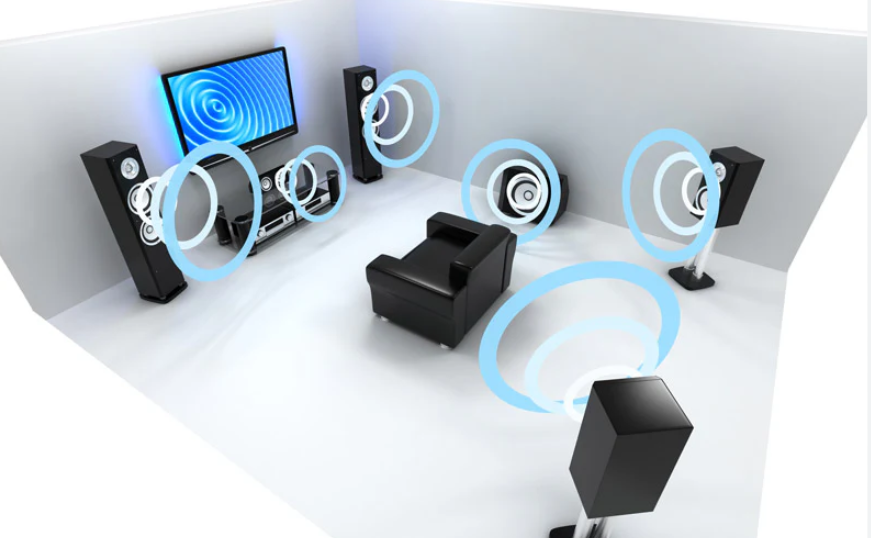
Once all components are installed, it’s time to set up and calibrate your system. Use the control app to group speakers and assign them to specific rooms or zones. This allows you to manage your audio system effectively, ensuring that each zone receives the desired audio input. Calibration is crucial for optimal sound quality. Some systems offer automatic calibration features that adjust the audio settings based on the room’s acoustics. For instance, Sonos’s True play tuning uses your smartphone’s microphone to measure how sound reflects off walls, furniture, and other surfaces, adjusting the speaker’s settings for the best possible sound. According to a 2023 study by What Hi-Fi?, users who calibrate their speakers report a 20-30% improvement in sound quality. Additionally, take the time to create playlists or select streaming services that you’ll be using. Many control apps integrate with popular streaming services, allowing you to enjoy your favorite music effortlessly.
Test and Enjoy

After setup and calibration, it’s time to test your system and start enjoying your multi-room audio. Play music in different zones to ensure everything is working correctly. Walk from room to room, checking for any connectivity issues or audio dropouts. If you encounter problems, make the necessary adjustments, such as repositioning speakers or optimizing Wi-Fi signal strength. Ensure that each speaker delivers clear, consistent sound without distortion. Fine-tuning your system might involve tweaking volume levels, equalizer settings, or re-calibrating certain speakers. Once everything is functioning smoothly, sit back and enjoy the immersive experience of your multi-room audio system. No matter if you’re hosting a party, relaxing with family, or enjoying a quiet evening, a well-set-up multi-room audio system enhances your home’s ambiance and provides endless enjoyment.
Closing Remarks
Setting up a multi-room audio system enriches your home environment with versatile, high-quality sound that adapts to every occasion. With easy-to-use controls and superbly integration into your smart home setup, a multi-room audio system offers not just entertainment, but a lifestyle upgrade that complements modern living. Investing in a multi-room audio system is more than just adding speakers—it's about creating a personalized audio experience that reflects your taste and enhances your home's atmosphere. Enjoy the freedom to fill each room with music or audio content of your choice, tailored to your mood and activities. It's time to be a music aficionado or simply enjoy the background ambiance, a well-designed multi-room audio setup brings a new dimension of enjoyment and convenience to your daily life.
Faqs
What is a multi-room audio system?
How do I set up a multi-room audio system?
What are the advantages of using a multi-room audio system?
Which brands provide reliable multi-room audio solutions?
How can I integrate a multi-room audio system with my existing home audio setup?
Are multi-room audio systems easy to control?
What types of speakers work with multi-room audio systems?
How can I optimize my multi-room audio system for the best sound quality?
Can multi-room audio systems integrate with smart home devices?
What are some popular applications for multi-room audio systems?
Leave a Comment
